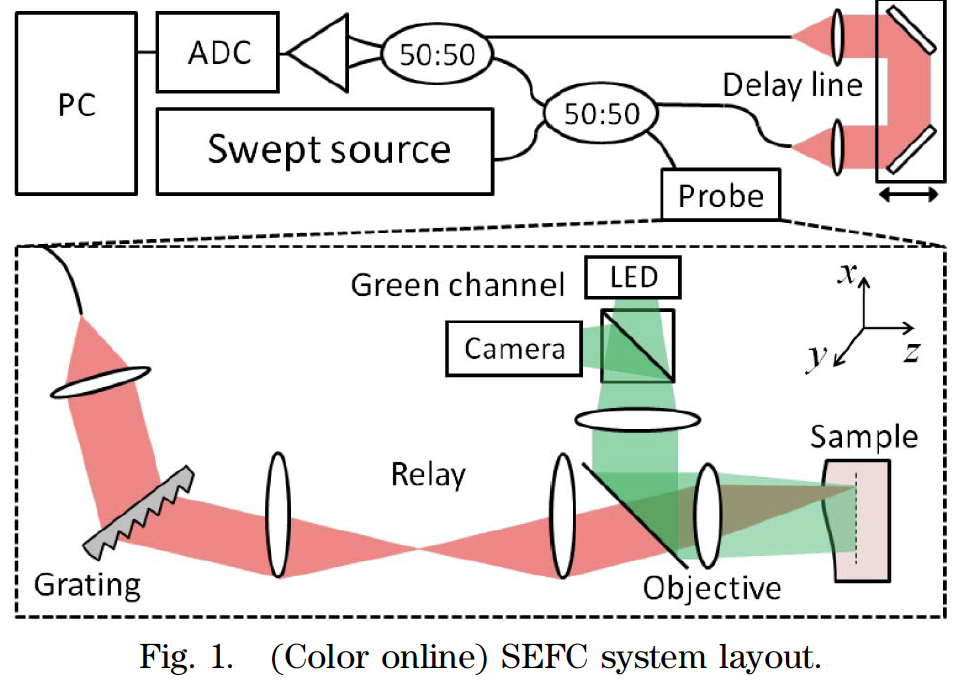Interferometrically encoded in vivo flow cytometry
- source: [ @golan2012 High-speed interferometric spectrally encoded flow cytometry ]
- tags: #flow-cytometry , #clinical-application , #bloodstream
There’s a complete new range of flow-cytometry approaches called In Vivo flow cytometry (IVFC) which essentially proposes the use the same approaches of flow cytometry but using the natural flow of blood through capillaries in the human body (or in other animals). The biggest challenge is the temporal resolution (cells flow at rates of \ $10\,\textrm{mm/s}$ ) and the depth at which cells can still be imaged. For the latter, longer wavelengths are the most useful, for the first, the idea is to use a Spectrally Encoded Flow Cytometer (SEFC), like the one below:

Although I don’t think I can fully understand what is going on, the core idea is first to replace the spatial domain by a wevelength domain (hence the presence of the grating). Secondly, the Mach-Zender interferometer allows to transform the time-domain to a the reflectivity-domain (Fourier analysis).
Since the base wavelength for the scanning source is \ $1060\,\textrm{nm}\$ , the penetration depth is around \ $80\,\mu m\$ . This seems to be enough for studying the oral mucosa , for example, avoiding the extraction of blood, which is a painful procedure.
Backlinks
These are the other notes that link to this one.
